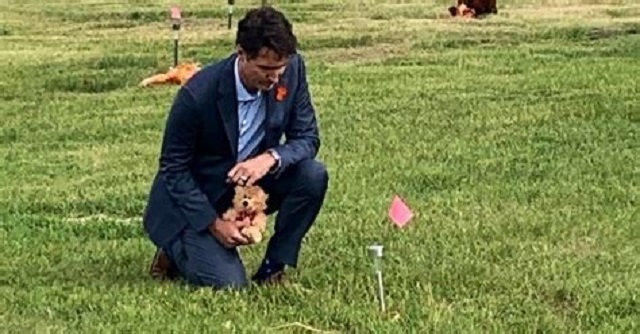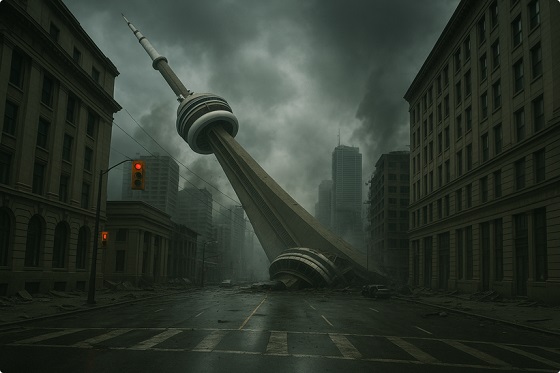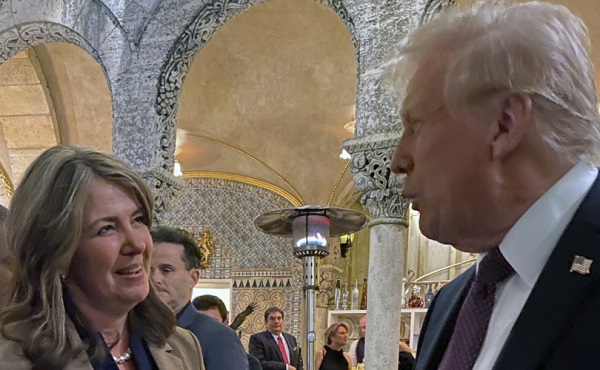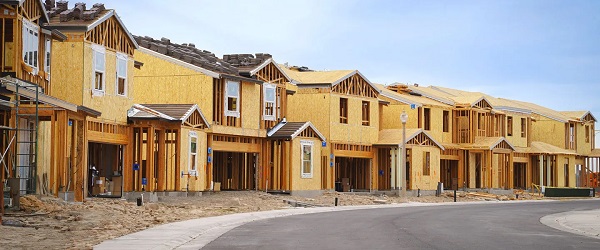Frontier Centre for Public Policy
Unmarked Graves Stories In Canada Lack Hard Evidence

From the Frontier Centre for Public Policy
By Tom Flanagan
Senior Fellow Tom Flanagan argues media and government keep backing unmarked graves claims with no bodies, no documents, no data. Public doubt is rising, and Ottawa’s chequebook fuels the narrative.
After years of claims, Canadians are still left questioning whether remains will ever be found
In May 2021, the Kamloops First Nation announced the discovery of 215 burial sites near a former residential school—a claim that sparked global headlines about “mass graves” and left Ottawa’s flag at half mast for five months.
We now know this was a mistake. A group of researchers, myself included, published Grave Error, laying out the reasons for skepticism. The ground-penetrating radar (GPR) results had almost certainly been misread, confusing thousands of feet of buried weeping tile in the orchard with human burials.
Our book can’t claim all the credit, but it probably helped shift public opinion. A clear majority of Canadians now say they want to see actual evidence, exhumed human remains, before accepting further claims of unmarked graves.
But despite Kamloops collapsing under scrutiny, the beat goes on. In August 2025, three new stories appeared about more supposed discoveries.
The Penelakut Tribe on Vancouver Island made headlines with a claim of graves on the grounds of the former Kuper Island residential school. The reporting was so vague it was impossible to know how many graves they thought they’d found. What was clear is that ground-penetrating radar was being used on known cemeteries. If you go looking in a graveyard, it should not surprise you to find graves.
Not to be outdone, the Sechelt on the Sunshine Coast announced the discovery of 41 additional unmarked graves near the former St. Augustine’s residential school. They had already claimed 40 in 2023, bringing the total to 81. The B.C. Legislature dutifully lowered its flag yet again.
Both B.C. stories shared the same shortcomings. No digging, no human remains, no public release of the actual survey data. Just announcements. Officials said they had uncovered archival material but provided no names, no documents and no proof of deaths or burials.
Meanwhile, in the Northwest Territories, the Dene at Fort Resolution tried a different approach. An Indian Residential School (IRS) had operated there from 1910, but decades earlier the Oblates had run a boarding school on Mission Island a couple of miles away. Unlike a federally funded IRS, it took in Indigenous, Métis and White children drawn north by the fur trade.
The Dene used GPR around Fort Resolution and came up empty. They then brought in cadaver dogs on Mission Island and claimed to have found the graves of five children and two adults. The word “excavation” appeared in news reports, but no one clarified whether that meant probing the surface or actually exhuming remains. And, as in B.C., no scientific or archival evidence was shared publicly.
Even if burials were located on Mission Island, what’s the connection to the residential school? People of all backgrounds lived there for half a century before the IRS opened in Fort Resolution. Deaths and burials were inevitable.
But would missionaries really cart bodies back to an island cemetery once a school existed in town? That strains belief.
It helps no one for First Nations to keep promoting claims with little evidence, and for much of the media to repeat them without scrutiny. The result is predictable: more victimhood narratives on one side, more public doubt on the other. If Ottawa cut off funding for these repeated searches, the claims would quickly dry up. And we’d all be better off.
Tom Flanagan is professor emeritus of political science at the University of Calgary and a senior fellow at the Frontier Centre for Public Policy.
Frontier Centre for Public Policy
The Kamloops Hoax Is Costing Taxpayers Billions

From the Frontier Centre for Public Policy
The vast scale of the waste, the damage to Canada’s international standing and the willingness of political leaders in all parties to accept a falsehood without question demand a full public inquiry. Such an inquiry should be led by someone with the stature of Preston Manning or Jean Chrétien—someone trusted across party lines to tell the truth.
No graves have been found but the spending hasn’t stopped—and no one in Parliament is asking the hard questions
The “Kamloops Hoax” is the largest misuse of taxpayer dollars in Canadian history, yet, unlike past scandals, the Official Opposition has failed to challenge it.
Critics use the term “Kamloops Hoax” because, more than three years after the 2021 announcement that 215 Indigenous children’s remains had been detected at Kamloops, no human remains have been recovered and no forensic evidence has confirmed the claim.
It’s worth recalling how past scandals have been handled when governments were caught misusing public funds.
In earlier eras, major political scandals brought down governments. The Pacific Railway Scandal toppled John A. Macdonald’s Conservatives less than a decade after Confederation, when opportunists exploited an over-generous government eager to complete a vital national railway. Public money was handed out freely, political allies were enriched and the opposition of the day seized the opportunity to expose the waste and corruption.
More than a century later, the Sponsorship Scandal forced Jean Chrétien’s Liberals from office after it became clear that party operatives had misused public funds in Quebec. Again, the opposition—then the Conservatives—did its job. The wrongdoing was debated in Parliament, reported in the press and discussed by Canadians from coast to coast. In both cases, the system worked because the opposition held government to account.
The Kamloops case is different. Whether it is a hoax, a scandal or a boondoggle—or all three—nothing in Canadian history comes close in scale to the waste it has triggered, or in the willingness of all parties to look the other way.
In May 2021, the Tk’emlúps te Secwépemc First Nation in British Columbia announced that ground-penetrating radar had detected what they believed were the remains of 215 children on the site of the former Kamloops Indian Residential School. The announcement was accepted as fact by the media and political leaders.
The claim set off a wave of similar announcements across the country, each citing radar anomalies as possible graves. Governments at every level pledged billions of dollars for searches and compensation. The narrative quickly became fixed in the public mind: atrocities, murders and secret burials had taken place at residential schools.
This single unproven claim has driven the passage of the United Nations Declaration on the Rights of Indigenous Peoples, $70 billion in extra spending on questionable Indigenous claims and a parliamentary motion branding Canada guilty of “genocide.”
The cost is staggering and still growing. Blacklock’s Reporter and Professor Hymie Rubenstein, a senior fellow with the Frontier Centre for Public Policy, point out that applications for a $320-million federal fund to search for alleged graves have been so numerous that the amount would have to double to meet demand. And the spending shows no sign of stopping.
The damage extends far beyond wasted dollars. Based on the assumption that graves had been discovered, the genocide motion has tarnished Canada’s reputation internationally. It has entrenched a narrative of national guilt unsupported by evidence and weakened our ability to speak credibly on human rights abroad.
The Trudeau Liberals bear full responsibility for creating this crisis. They turned an unverified allegation into a moral panic, then spent public money as if there were no limits. Whether Mark Carney’s government will continue this course remains to be seen.
Yet the most glaring failure lies with the Official Opposition. In past scandals, opposition parties seized every opportunity to expose government waste and misconduct. This time, the Conservatives have been largely silent.
Aside from a few tentative remarks from Conservative Party leader Pierre Poilievre, no Conservative MP has challenged the core narrative of atrocities, murders and secret burials at residential schools. Worse, they reinforced it. When NDP MP Leah Gazan introduced her genocide motion—rooted in the same unsubstantiated claim—every Conservative MP voted for it. Not one dared to oppose a motion based on no credible evidence.
Think about that. A motion alleging that 215 children died under sinister circumstances and were secretly buried by priests sailed through Parliament unanimously. In my view, it was one of the most shameful moments in Parliamentary history and in the long history of the Conservative Party.
Carney appears ready to continue a boondoggle largely created by his predecessor.
Eventually, there must be a reckoning. The vast scale of the waste, the damage to Canada’s international standing and the willingness of political leaders in all parties to accept a falsehood without question demand a full public inquiry. Such an inquiry should be led by someone with the stature of Preston Manning or Jean Chrétien—someone trusted across party lines to tell the truth.
Until then, Conservatives must find the courage to speak if their leader will not. Fear of offending Indigenous sensibilities or jeopardizing “reconciliation” cannot justify the misuse of taxpayer money. Truth must not be sacrificed for political convenience.
Canadians deserve better. They deserve leaders who will question unverified claims before committing billions of their hard-earned dollars. They deserve a Parliament willing to defend both fiscal responsibility and historical accuracy. And they deserve an Official Opposition that understands its role is to hold government to account, not to nod along as the country is led into one of the costliest boondoggles in its history.
Brian Giesbrecht is a retired judge and a senior fellow at the Frontier Centre for Public Policy.
Business
Trudeau’s Gone So Why Does Everything Still Feel Broken?

From the Frontier Centre for Public Policy
By Lee Harding
Lee Harding skewers Ottawa’s déjà vu politics: Trump is tariffing Canada into submission again, Carney’s Liberals are flailing, and Poilievre’s back—like none of early 2025’s drama ever happened.
The Liberals swapped leaders, but not direction, and the country is paying for it
New year, new prime minister—same failures. Mark Carney’s Ottawa looks just as weak and directionless as it did under Justin Trudeau, and Canadians are paying the price.
Despite the drama of 2025—Trudeau’s resignation, Carney’s rise to Liberal leader, an election fought on promises of competence, and Pierre Poilievre’s shock defeat—Canada has ended up right back where it started.
Poilievre is already headed back to the House after a resounding byelection win in Battle River–Crowfoot on Aug. 18, pulling nearly 80 per cent of the vote. But what’s changed? Carney’s shine has already worn off, and fewer Canadians than ever believe he can handle the country’s domestic or international challenges. Less than four months into office, the renewed Liberal government has left Canada weaker abroad and poorer at home.
The Carney honeymoon ended fast. Days after his victory, he posed alongside U.S. President Donald Trump, mimicking Trump’s signature “thumbs up.” Trump took credit for Carney’s win and revived his “51st state” rhetoric. Carney’s team scrambled to downplay the moment, but the damage was done. This was the man who promised to stand up to Trump, not stand beside him.
Worse, Canadians soon learned that Carney had quietly removed most tariffs on American goods during the campaign, a politically clever move that stripped Canada of any leverage. As a result, Trump’s administration steamrolled Ottawa with 50 per cent tariffs on Canadian steel, aluminum and copper, and 35 per cent on goods not covered by CUSMA.
While Canada floundered, global competitors moved in. The U.K., European Union, Japan, South Korea, Vietnam and the Philippines all inked new trade deals with Washington. Once seen as a preferred partner, Canada is now on the outside looking in.
Diplomatic humiliation followed. On the very day Poilievre won his byelection, Trump convened NATO allies to discuss a peace framework for Ukraine and Russia—Canada wasn’t invited. Once proud of our role as an honest broker and middle-power influencer, we’re now irrelevant.
Carney’s much-hyped economic expertise has also fallen flat. He appeared willing to govern without a federal budget—an act of arrogance or incompetence, take your pick. After backlash, he promised a fall budget, but there’s still no credible plan to rein in deficits or restore confidence. Even Air Canada workers ignored his calls to return to work.
A long-overdue defence spending pledge of $8 billion has been mostly swallowed by decarbonization programs, doing little for national security. Meanwhile, the government’s environmental agenda continues to punish the economy. Slashing the consumer carbon tax to zero was a headline grabber, but industrial carbon taxes and regulatory burdens continue to rise, choking off investment, productivity and competitiveness.
Western alienation is deepening. The Carney government’s shortcut for approving energy projects, fast-tracking anything “in the national interest,” politicizes resource development and creates uncertainty. Carney has even hinted that Indigenous groups may gain veto power, further muddying the investment landscape.
The economy is stagnant. Canada’s international stature is diminished. The West remains ignored. For many Canadians, Carney looks like nothing more than Trudeau 2.0.
Incredibly, we’re right back where we were when the year began. Trump is blocking our exports. The prime minister can’t stop him. And Pierre Poilievre is back in Parliament, sharpening his attacks.
The only real difference? The NDP doesn’t have a leader. But once it does, it will be eager to bring down the government and try to rebuild its own credibility. Political change is coming—but not just yet.
Lee Harding is a research fellow with the Frontier Centre for Public Policy.
-

 Addictions1 day ago
Addictions1 day agoWhy North America’s Drug Decriminalization Experiments Failed
-

 Business1 day ago
Business1 day agoDisney scrambles as young men reject DEI-filled franchises
-

 Alberta1 day ago
Alberta1 day agoGood Sense Beats Team Canada’s Hysteria
-

 Health1 day ago
Health1 day agoThe Hidden Risk of an Abortion
-

 Alberta21 hours ago
Alberta21 hours agoNew Calgary plant to produce luxury vinyl flooring with Alberta oil and gas
-

 Business1 hour ago
Business1 hour agoInvestors Fleeing Green Energy Scene After Death Of Biden’s Freebies
-

 Business1 day ago
Business1 day agoCarney’s housing plan will likely spend a lot for very little
-

 Energy3 hours ago
Energy3 hours agoGeothermal Energy in Canada: Overview, Developments, Exploration Areas, and Leading Companies


